Today’s Current Affairs: 15th aug 2023 for UPSC IAS exams, State PSC exams, SSC CGL, State SSC, RRB, Railways, Banking Exam & IBPS, etc
Table of Contents
Tampara Lake : Direction From National Green Tribunal

The National Green Tribunal, Eastern Zone, has directed the Odisha government not to go ahead with ‘illegal’ construction in and around Tampara Lake
- Tampara Lake is one of the largest fresh water lakes in the State of Odisha.
- The beautiful lake & the nearby Chilika Lagoon highlight the ecological diversity Odisha is blessed with.
- It supports at least 60 species of birds, 46 species of fishes, at least 48 species of phytoplanktons, and more than seven species of terrestrial plants and macrophytes.
- It is an important habitat for vulnerable species such as Cyprinus carpio, common pochard (Aythya ferina), and river tern (Sterna aurantia).
- It is already placed in the Wetland Atlas prepared by Ministry of Environment, Forest and Climate Change in 2010.
National Green Tribunal:
- It has been established under the National Green Tribunal Act 2010.
- New Delhi is the Principal Place of Sitting of the Tribunal and Bhopal, Pune, Kolkata and Chennai shall be the other four places of sitting of the Tribunal.
- NGT is mandated to make disposal of applications or appeals finally within 6 months of the filing of the same.
STEREO Spacecraft : NASA

Nasa’s Solar Terrestrial Relations Observatory (STEREO-A) spacecraft made its first Earth flyby nearly 17 years after its launch.
- The pair of STEREO (Solar Terrestrial Relations Observatory) spacecraft were launched on October 25, 2006, from Florida’s Cape Canaveral Air Force Station.
- The two spacecraft were situated in Sun’s orbit, STEREO-A (“Ahead”) and STEREO-B (“Behind”).
- The dual-spacecraft mission accomplished its major goal by delivering the first-ever stereoscopic view of our star.
- On February 6, 2011, another significant milestone was achieved as both STEREO-A and -B reached a remarkable 180-degree separation in their orbits, which gave us the full sphere image of the Sun.
- It will synthesize its views with those from Nasa’s and the European Space Agency’s Solar and Heliospheric Observatory (SOHO) and Nasa’s Solar Dynamics Observatory (SDO).
- Its distance from Earth changes throughout the flyby, it will optimize its stereo vision for different-sized solar features at different times, akin to adjusting the focus on a several million-mile-wide telescope.
- It will allow scientists to understand how a coronal mass ejection’s (CME) magnetic field evolves on its way to Earth.
Vindhyagiri frigate:
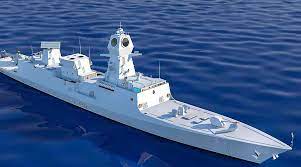
President of India will launch Vindhyagiri frigate at Garden Reach Shipbuilders and Engineers Limited, Kolkata, on August 17.
- Vindhyagiri frigate is named after a mountain range in Karnataka.
- It is the sixth ship of the Project 17A frigates.
- These warships are follow-ons of the Project 17 Class Frigates (Shivalik Class), with improved stealth features, advanced weapons and sensors and platform management systems.
- Under the Project 17A programme, four ships by Mumbai-based Mazagaon Dock Shipbuilders Limited (MDL) and three by Garden Reach Shipbuilders and Engineers Limited (GRSE) are under construction.
- The project’s first five ships were launched by MDL and GRSE, between 2019-2022.
- These ships have been designed in-house by the Indian Navy’s Warship Design Bureau.
- As much as 75% of the orders for equipment and systems of Project 17A ships are from indigenous firms, including MSMEs.
Old INS Vindhyagiri:
- It was the sixth and last of the Nilgiri class frigates—in its nearly 31 years of service from 8 July 1981 to 11 June 2012, had seen many multinational exercises and performed maritime surveillance, coastal patrol and anti-piracy operations.
Pradhan Mantri Uchchatar Shiksha Abhiyan:
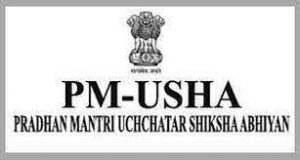
14 States and Union Territories which are yet to sign a crucial Memorandum of Understanding (MoU) with the Union Education Ministry, which mandates the implementation of the Pradhan Mantri Uchchatar Shiksha Abhiyan (PM-USHA) .
- In the light of the National Education Policy, Rashtriya Uchchatar Shiksha Abhiyan (RUSA) scheme has been launched as Pradhan Mantri Uchchatar Shiksha Abhiyan (PM-USHA).
- It covers government and government-aided institutions of the States and UTs.
- It is a Centrally Sponsored Scheme (CSS).
- PM-USHA would be focusing on the following:
- Equity, Access, and Inclusion: The scheme focuses on equity initiatives and gender inclusion by providing adequate opportunities to underprivileged groups, and it promotes the inclusion of women, minorities, SCs/STs/OBCs, and specially-abled people in higher education, which will help to increase the GER
- Developing Quality Teaching & Learning processes: It would provide the facilities to the institution for upgrading the physical and digital infrastructure and also for the conversion of single-stream higher education institutions (HEIs) into multiple streams institutions
- Accreditation of Non-Accredited Institutions & Improving Accreditation: Accreditation pushes institutions to meet and maintain higher standards in education, in turn, increases trust and confidence in them among the public and boosts accountability
- ICT-based Digital Infrastructure: To ensure greater access to education, there is the significant importance of technology in bridging the language barrier between teachers and students, creating digital libraries, popularizing language learning as well as introducing the Open distance learning (ODL) programs.
- Enhancing Employability through Multidisciplinarity : Collaboration between industry and academia is key to catalysing innovation and growth in career building. PM-USHA will encourage the HEIs to get linked with the Industry and the Market to strengthen skills, innovations, and employability
Aditya-L1 Mission : Reached The Spaceport In Sriharikot
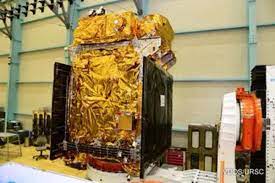
India’s first solar mission, Aditya-L1, has recently reached the spaceport in Sriharikota.
- Aditya-L1 Mission is the first space-based Indian mission to study the Sun.
- It will be launched by the PSLV-XL launch vehicle.
- The spacecraft shall be placed in a halo orbit around the Lagrange point 1 (L1) of the Sun-Earth system, which is about 1.5 million km from the Earth.
- A satellite placed in the halo orbit around the L1 point has the major advantage of continuously viewing the Sun without any occultation/eclipses.
- This will provide a greater advantage in observing solar activities and their effect on space weather in real-time.
- The spacecraft carries seven payloads to observe the photosphere, chromosphere and the outermost layers of the Sun (the corona) using electromagnetic and particle and magnetic field detectors.
- Using the special vantage point L1, four payloads directly view the Sun and the remaining three payloads carry out in-situ studies of particles and fields at the Lagrange point L1, thus providing important scientific studies of the propagator effect of solar dynamics in the interplanetary medium.
- The other objectives of Aditya L1 mission will be to understand the drivers for space weather (origin, composition and dynamics of solar wind), and identify the sequence of processes that occur at multiple layers (chromosphere, base and extended corona) which eventually leads to solar eruptive events.
Lagrangian points:
- It is also known as Lagrange points or liberation points, are specific locations in space where the gravitational forces of two large bodies, such as a planet and its moon or a planet and the Sun, produce enhanced regions of gravitational equilibrium.
Bubonic Plague : China Reported Two Cases

China’s northern region of Inner Mongolia recently reported two cases of bubonic plague.
- Plague is an infectious disease caused by a specific type of bacterium called Yersinia pestis.
- pestis can affect humans and animals and is spread mainly by fleas.
- Bubonic plague, also known as Black Death, is one type of plague. It gets its name from the swollen lymph nodes (buboes) caused by the disease.
- The other types of plague are:
- Septicaemic plague, which happens when the infection goes all through the body.
- Pneumonic plague, which happens when the lungs are infected.
- Symptoms: Bubonic plague symptoms include
- Sudden high fever and chills.
- Pains in the areas of the abdomen, arms and legs.
- Headaches.
- Large and swollen lumps in the lymph nodes (buboes) that develop and leak pus.
- Transmission:
- pestis is spread mostly by fleas on rodents and other animals.
- It is transmitted between animals and humans by the bite of infected fleas, direct contact with infected tissues, and inhalation of infected respiratory droplets.
- It’s an example of a disease that can spread between animals and people (a zoonotic disease).
- Treatment:
- It can be treated and cured with antibiotics.
- Antibiotics that treat bubonic plague include Ciprofloxacin, levofloxacin, moxifloxacin, Gentamicin and Doxycycline.
Mushkbudji : Aromatic Rice Received GI Tag
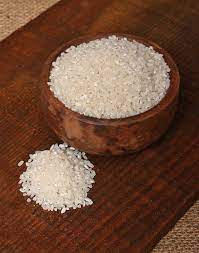
An aromatic rice named “Mushkbudji” from Kashmir received a Geographical Indication (GI) Tag recently.
- Mushkbudji rice, which was granted the GI tag along with eight other products from Jammu and Kashmir, is known for its short, bold grains and rich aroma.
- In the past, the consumption of this aromatic rice was restricted to special events due to its limited availability and high cost.
- The government’s efforts to revive this rice variety in 2007 after its decline in the 1970s due to blast disease have also contributed to its resurgence.
- More farmers are now drawn to cultivate this unique and fragrant rice variety due to its promising qualities and potential for higher income.
National Manuscripts Bill 2023:
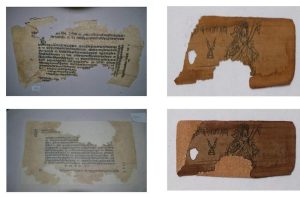
India’s rich cultural heritage is encapsulated in its ancient manuscripts, which hold invaluable knowledge and historical significance.
- However, the loss and dispersal of many of these manuscripts, even beyond the country’s borders, have raised concerns.
- In a significant move, the Indian government is gearing up to address this issue through the introduction of the National Manuscripts Bill, 2023.
- The primary objectives of the Bill include documenting and cataloguing Indian heritage texts worldwide, maintaining accurate information, and specifying consultation conditions.
- The bill proposes the establishment of a 10-member National Manuscripts Authority (NMA), chaired by the Culture Minister and including representatives from Culture, Finance, Education, and private agencies.
- The NMA will oversee digitization, conservation, preservation, editing, and publication of manuscripts.
- The NMA will possess civil court powers to regulate manuscript access, investigate thefts, and ensure protection against damage or theft.
- The NMA can acquire manuscripts from private owners based on content importance, with compensation determined by an expert committee.
- Manuscripts is a handwritten composition on materials like palm leaf, paper, cloth, and bark, in Sanskrit and regional languages, dating back at least 75 years.
- India possesses approximately 10 million manuscripts in 80 ancient scripts, with the National Mission for Manuscripts (NMM) responsible for preservation.
- The Bakhshali manuscript, an ancient mathematical text, showcases the early use of zero and dates back to the third or fourth century A.D.
Microplastics In Human Heart : China
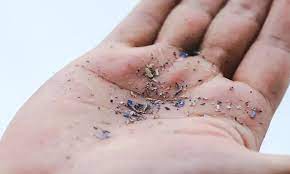
A team of scientists in China recently found microplastics in the human heart for the first time.
- Microplastics are tiny bits of various types of plastic found in the environment.
- They are a result of the fragmentation and degradation of larger plastic items, as well as the direct release of tiny plastic particles, often intentionally added to consumer products like cosmetics and cleaning agents.
- The name is used to differentiate them from “macroplastics” such as bottles and bags made of plastic.
- There is no universal agreement on the size that fits this bill — the S. NOAA (National Oceanic and Atmospheric Administration) and the European Chemical Agency define microplastic as less than 5mm in length.
- There are two categories of microplastics: primary and secondary.
- Primary microplastics:
- They are tiny particles designed for commercial use, such as cosmetics, as well as microfibers shed from clothing and other textiles, such as fishing nets.
- They enter the environment directly through any of various channels—for example, product use, unintentional loss from spills during manufacturing or transport, or abrasion during washing.
- Secondary microplastics:
- They are particles that result from the breakdown of larger plastic items, such as water bottles.
- This typically happens when larger plastics undergo weathering, through exposure to, for example, wave action, wind abrasion, and ultraviolet radiation from sunlight.
- Primary microplastics:
Enhanced Analysis Of Global Water Distribution:

A recent analysis by scientists from the University of Bonn reveals that droughts worldwide are more widespread than previously recorded by the Gravity Recovery and Climate Experiment (GRACE) data from 2002-2017.
- The study combines GRACE satellite measurements with the WaterGAP hydrological model, improving the spatial resolution of water distribution maps from 300 km to 50 meters.
- The findings demonstrate that significant droughts, including those like the 2010 Amazon drought, extend over larger areas than satellite data alone indicates.
- This research has wider implications, aiding the understanding of global water balance, the causes of regional droughts and floods, and the influence of climate change on precipitation patterns.
- The analysis by University of Bonn scientists employs a combined approach of GRACE satellite data and the WaterGAP hydrological model.
- This method improves the spatial resolution of water distribution maps, revealing that major droughts span larger areas than previously thought.
- The study thus enhances our understanding of global drought extent and highlights the limitations of satellite data in capturing localized droughts.
- While GRACE satellites provided comprehensive data on Earth’s water reservoirs, they had a spatial resolution limitation of about 300 to 350 kilometers.
- This limitation rendered it feasible to make dependable assertions solely within regions encompassing approximately 100,000 square kilometers.
- In contrast, global hydrological models offer resolutions as fine as 50 kilometers or less, utilizing various meteorological measurements and factors.
- The researchers merged the GRACE satellite measurements with the WaterGAP hydrological model to create a global land water storage dataset.
- This innovative approach improved the resolution of water distribution maps to 50 meters from the previous 300 km, providing a more accurate representation of drought-affected areas.
Chhaupadi : Period Hut Ritual Of Nepal

A 16-year-old girl from Nepal recently died tragically after being banished to a “period hut” as part of the ancient practice of chhaupadi, which considers women and girls unclean and untouchable during menstruation.
- The girl reportedly died from a snake bite while sleeping in the hut.
- Chhaupadi forces teenage girls to stay alone in these huts during their periods. Despite campaigns against the practice, it persists, with animal attacks and smoke inhalation causing fatalities.
- Although chhaupadi was outlawed in 2005, implementation remains weak.
- The tragedy highlights the challenges of eradicating deeply ingrained cultural practices and enforcing legal changes.
- Chhaupadi is an ancient practice in Nepal that deems women and girls unclean and untouchable during menstruation.
- They are forced to stay alone in “period huts” during their menstrual periods, often leading to dangerous situations and fatalities.
- Campaigns have been launched in Nepal to end chhaupadi, leading to the destruction of thousands of period huts.
- Despite legal prohibitions against the practice and advocacy efforts, it continues due to deeply ingrained cultural beliefs and challenges in enforcing legal changes.




